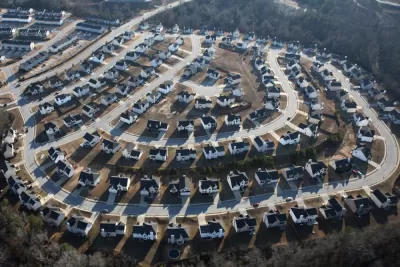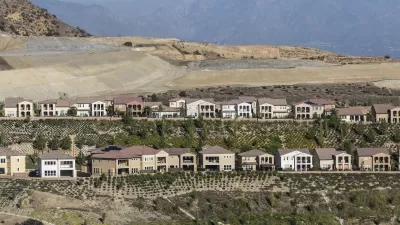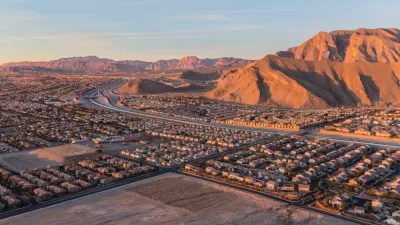For many decades now, most communities in the United States have grown as a series of subdivisions, built on a tried and true formula. It might be time to change the math.

"[Z]oning disputes typically only involve a few parcels of land at a time," according to Sarah Kobos. Controversial and headline-grabbing as some zoning disputes might be, "if you really care about the future of your city, you need to think bigger." One place to look to find the kind of scale Kobos seeks: subdivision regulations.
Kobos writes the local subdivision regulations wield tremendous power, but from obscurity. "Even the most battle-hardened veteran of the zoning wars would be hard pressed to explain what the subdivision regulations do."
That's where Kobos's article comes in: to explain the ins and outs of subdivision regulations, and why they matter to the experience and livability of communities. "If your city hasn’t re-evaluated its subdivision regulations in a while, you’re probably still replicating bad ideas from the 1970’s — creating inflexible, and auto-centric places," writes Kobos. As prescription for subdivision malaise, Kobos recommends a few "baby step" changes that can help implement incremental change with regard to block lengths, connectivity, and cul-de-sacs.
FULL STORY: You Care About the Subdivision Regulations, You Just Don't Know it (Yet)

Alabama: Trump Terminates Settlements for Black Communities Harmed By Raw Sewage
Trump deemed the landmark civil rights agreement “illegal DEI and environmental justice policy.”

Study: Maui’s Plan to Convert Vacation Rentals to Long-Term Housing Could Cause Nearly $1 Billion Economic Loss
The plan would reduce visitor accommodation by 25% resulting in 1,900 jobs lost.

Planetizen Federal Action Tracker
A weekly monitor of how Trump’s orders and actions are impacting planners and planning in America.

Waymo Gets Permission to Map SF’s Market Street
If allowed to operate on the traffic-restricted street, Waymo’s autonomous taxis would have a leg up over ride-hailing competitors — and counter the city’s efforts to grow bike and pedestrian on the thoroughfare.

Parklet Symposium Highlights the Success of Shared Spaces
Parklets got a boost during the Covid-19 pandemic, when the concept was translated to outdoor dining programs that offered restaurants a lifeline during the shutdown.

Federal Homelessness Agency Places Entire Staff on Leave
The U.S. Interagency Council on Homelessness is the only federal agency dedicated to preventing and ending homelessness.
Urban Design for Planners 1: Software Tools
This six-course series explores essential urban design concepts using open source software and equips planners with the tools they need to participate fully in the urban design process.
Planning for Universal Design
Learn the tools for implementing Universal Design in planning regulations.
Caltrans
Smith Gee Studio
Institute for Housing and Urban Development Studies (IHS)
City of Grandview
Harvard GSD Executive Education
Toledo-Lucas County Plan Commissions
Salt Lake City
NYU Wagner Graduate School of Public Service





























